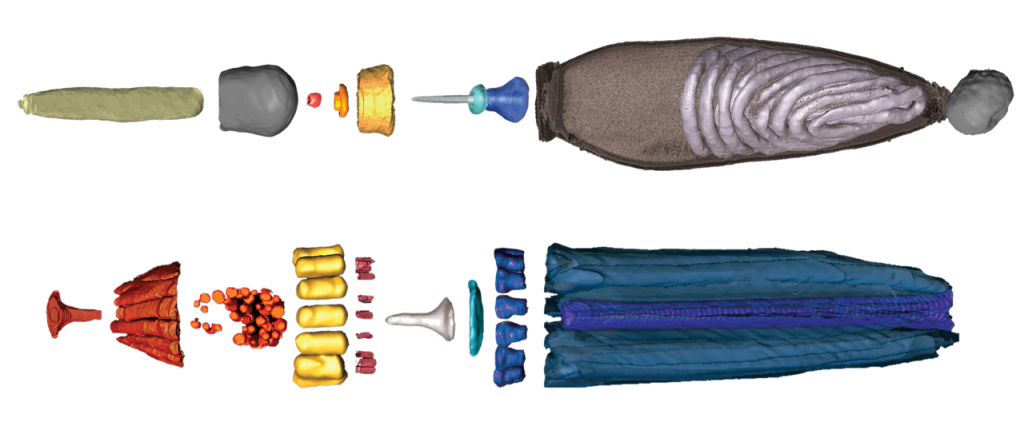By: CIFAR
8 Jun, 2017

The dinoflagellate protists Polykrikos kofoidii and Nematodinium have long been known for carrying these weapons and using them to disable the other single-celled organisms they prey on. Recently, CIFAR fellows and colleagues were able to use Focused Ion Beam Scanning Electron Microscopy to create the first three-dimensional views of the harpoon-like structures called nematocysts, and gain insight into exactly how they work.
Polykrikos is shown to the right with an arrow pointing at the nematocyst. The detail of the nematocyst, top, shows the capsule that contains a sharp stylet. Connected to it and coiled below is a tubule that serves as a rope to keep the prey attached until it can be eaten.
Although the nematocysts in Nematodium have the same evolutionary origin, they work in a slightly different way. Between 11 and 15 of them are arranged in a circle resembling a Gatling gun and fire off simultaneously, above.
The research was published in Science Advances. The lead author was Greg Gavelis, a post-doctoral researcher at Arizona State University. Senior authors were IMB Program Director Patrick Keeling and Senior Fellow Brian Leander.
CIFAR is a registered charitable organization supported by the governments of Canada and Quebec, as well as foundations, individuals, corporations and Canadian and international partner organizations.